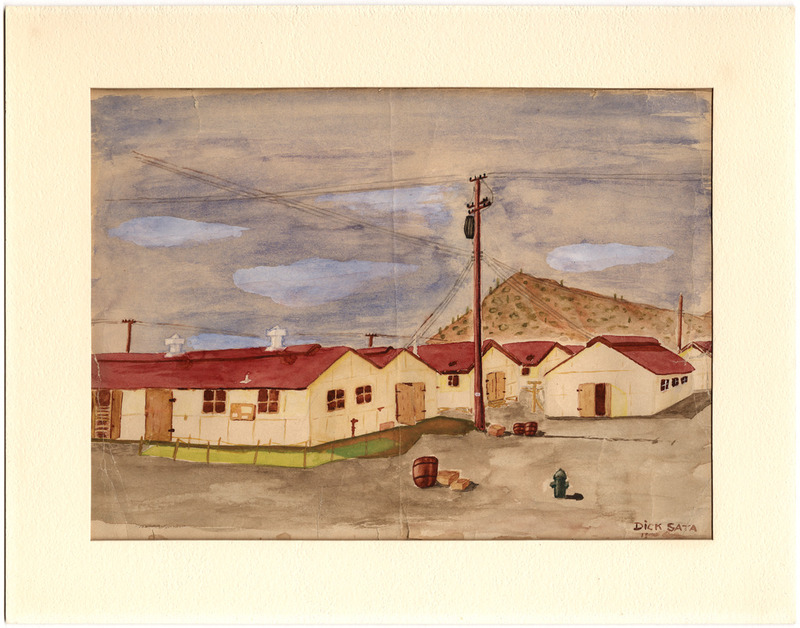Curatorial Statement
Above is an untitled painting from 1942 by a man named Dick Sata while interned at the Gila River relocation camp in Gila River, Arizona. It is one of many examples of both the landscape art commonly created by individuals during internment and of some of the paintings included in this exhibit. The sentiment of art being a positive outlet for those facing traumatic experiences is seen in paintings such as this, with the simplistic style being devoid of position or a particular message. Within this context, the art was solely a vessel for expression and distraction from the darker realities of internment camps.
In terms of this exhibit, it is my goal to explore the circumstances in which Japanese Americans were forced into internment during World War II as well as what the differing art pieces that they created during the time reveal about the human condition. It is my hope that those who faced internment and the art they created are given the recognition they deserve. An impact that is wished for is reflection on how art can be a way in which we find solace, and that healing pain is a universal experience which we should all feel empathy towards. It is my understanding that creating art during tumultuous circumstances in search of feeling solace is a pervasive occurrence throughout history and that its existence during World War II proves that. It is my hope to explain this phenomenon and to make sense of it. The vision of the exhibit itself is meant to be artistic and philosophical in idea yet serious and respectful in approach, given the broad yet sensitive subject matter. Within this exhibit, textual and anecdotal evidence is used to provide information on the other media included. Both media of art pieces from established artists as well as civilian artists within camps are included to highlight the interesting lack of dichotomy in terms of who may create art. Some of the objects chosen are drawings or paintings, yet others are physical objects that served a purpose within its respective internment camp. Items such as brooches and bouquets that were used for makeshift ceremonies are an example of the idea of humans following cultural practices and being forced to do so by any means necessary. The exhibit was heavily influenced by the experience of interned individuals who felt that the way in which they could feel normalcy in a horrible situation was through art. The themes of loss and hope simultaneously may be seen.
